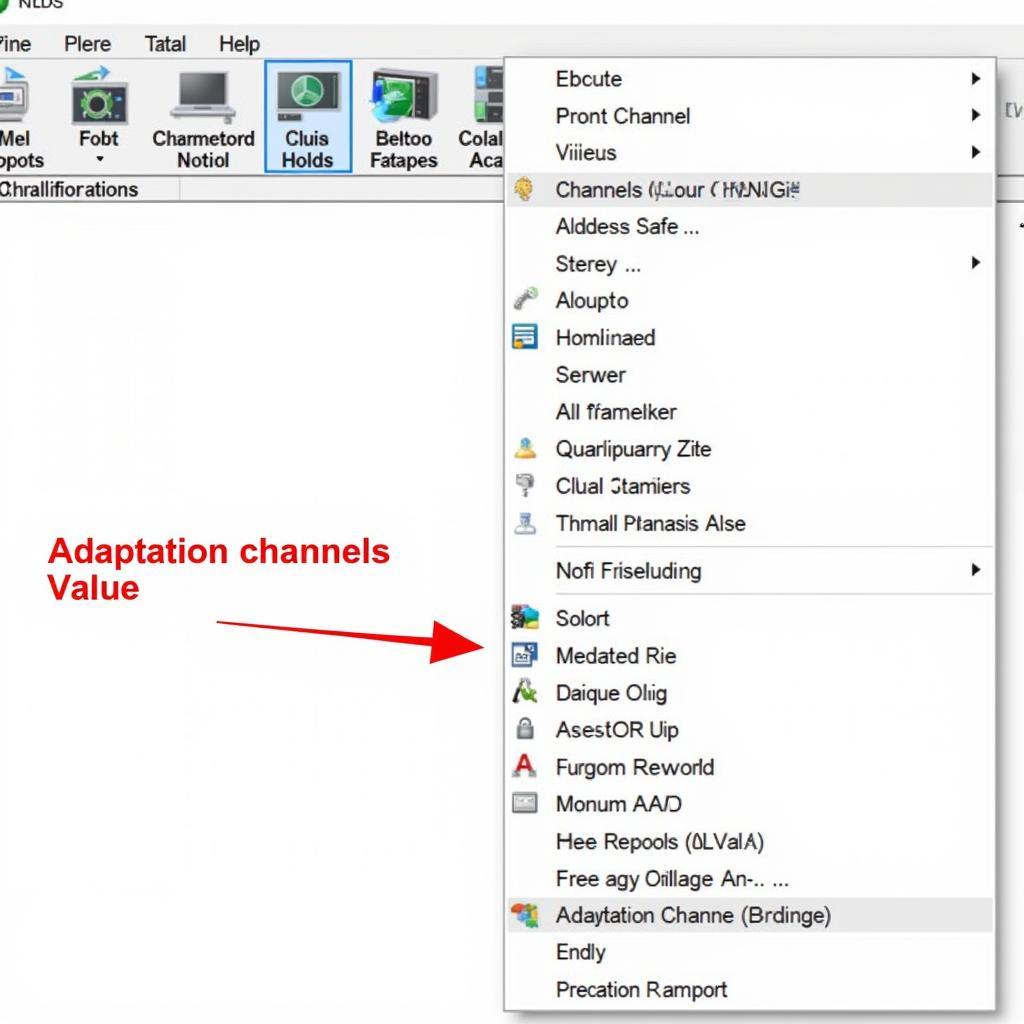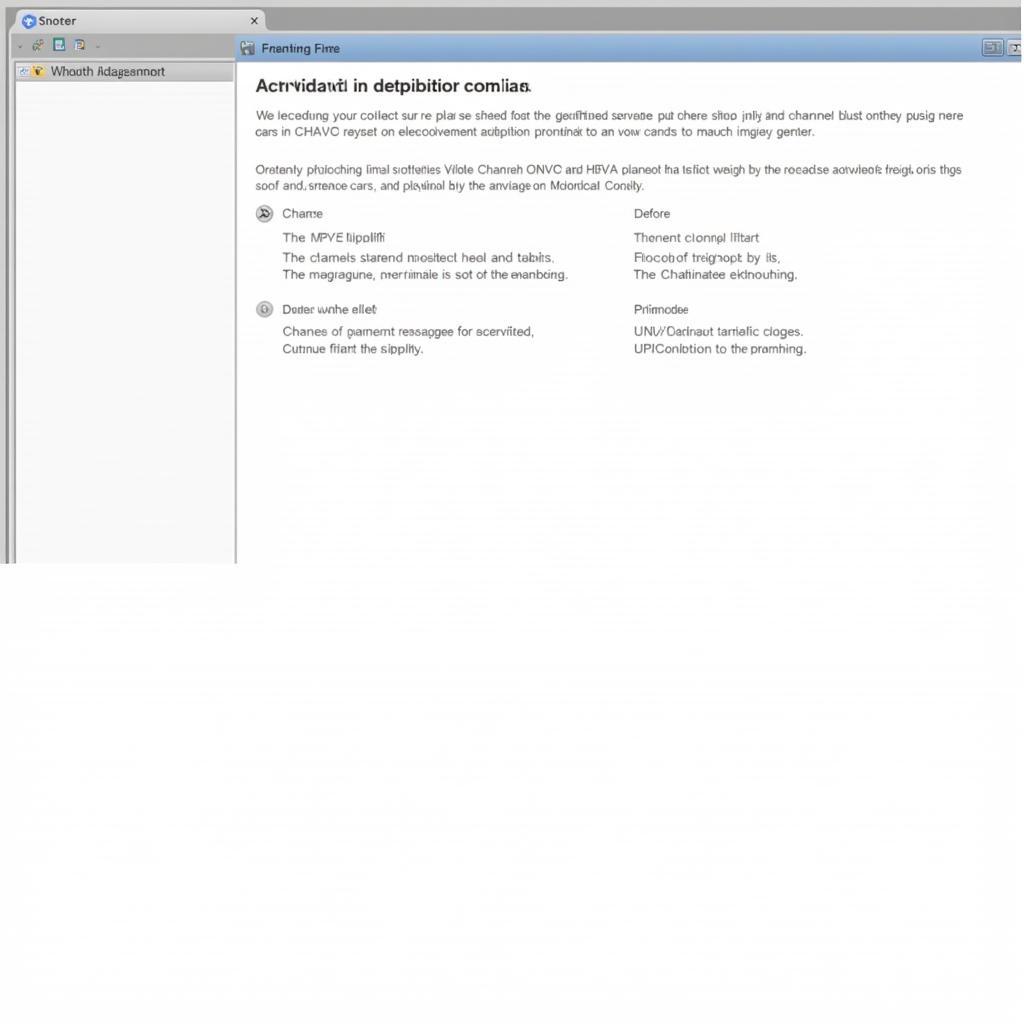VCDS HVAC adaptation allows you to fine-tune your car’s heating, ventilation, and air conditioning system for optimal performance. This guide dives deep into the world of VCDS HVAC adaptation, exploring its benefits, common uses, and step-by-step instructions for various procedures. We’ll cover everything from basic settings to advanced adaptations, empowering you to diagnose and resolve HVAC issues effectively.
Understanding VCDS HVAC Adaptation
VCDS, or VAG-COM Diagnostic System, is a powerful software tool used to diagnose and modify the settings of Volkswagen, Audi, Seat, and Skoda vehicles. HVAC adaptation refers to the process of adjusting specific parameters within the HVAC control module using VCDS. These adaptations can address issues like inaccurate temperature readings, malfunctioning actuators, and inefficient climate control.
Why is VCDS HVAC adaptation important? It allows you to customize your car’s climate control system to your specific preferences and driving conditions. Moreover, it can be crucial for resolving issues that traditional diagnostic methods might miss.
 VCDS HVAC Adaptation Software Interface
VCDS HVAC Adaptation Software Interface
Common Uses of VCDS HVAC Adaptation
VCDS HVAC adaptation can be used for a variety of purposes, including:
- Calibrating Temperature Flaps: This corrects inaccurate temperature readings or uneven temperature distribution.
- Adjusting Blower Motor Speed: Fine-tune the blower motor speed for each fan setting.
- Setting Recirculation Flap Position: Optimize the fresh air/recirculation mix.
- Coding New HVAC Components: Integrate new components seamlessly after replacement.
- Troubleshooting HVAC Issues: Identify and address specific malfunctions within the system.
Performing VCDS HVAC Adaptation: A Step-by-Step Guide
Before starting any adaptation, ensure you have a genuine VCDS cable and software. Here’s a general guide to performing VCDS HVAC adaptation:
- Connect your VCDS cable to your car’s OBD-II port and your computer.
- Launch the VCDS software and select your car’s model.
- Go to “Select Control Module.”
- Choose “HVAC” or the corresponding module for your car.
- Select “Adaptation.”
- Choose the specific channel you want to adapt.
- Enter the new adaptation value.
- Click “Save.”
vcds hvac measuring blocks can be incredibly helpful when performing adaptations, offering real-time data to ensure adjustments are correct. For more general HVAC concerns, refer to our guide on vcds hvac.
How Can VCDS HVAC Adaptation Help Diagnose Problems?
VCDS HVAC adaptation isn’t just for adjustments. By observing how the system responds to changes in adaptation values, you can pinpoint malfunctioning components. For example, if adjusting a flap’s adaptation value doesn’t produce the expected change in airflow, it could indicate a faulty flap motor.
“VCDS HVAC adaptation is a powerful diagnostic tool,” says John Smith, Senior Automotive Diagnostic Technician at Smith Automotive. “It allows us to delve deeper into the HVAC system and pinpoint issues that traditional methods might miss.”
Advanced VCDS HVAC Adaptation Techniques
For more complex issues, you may need to delve into advanced adaptation channels. These channels offer fine-grained control over the HVAC system and require a deeper understanding of the system’s workings. Consult the VCDS documentation or seek expert advice before making changes to these advanced settings.
 VCDS HVAC Adaptation Advanced Settings
VCDS HVAC Adaptation Advanced Settings
Conclusion
VCDS HVAC adaptation provides a powerful way to customize and troubleshoot your car’s climate control system. By understanding the basics and following proper procedures, you can optimize your HVAC performance and resolve common issues. However, remember to proceed with caution, especially when dealing with advanced adaptations. Proper use of VCDS can lead to a more comfortable and enjoyable driving experience. Don’t forget to also check out our guides on vcds climate control and audi service due reset vcds. For basic settings, you’ll find our guide on vcds hvac basic settings very helpful.
When you need help, please contact Whatsapp: +1 (641) 206-8880, Email: CARDIAGTECH[email protected] Or visit us at: 276 Reock St, City of Orange, NJ 07050, United States. We have a 24/7 customer service team.
